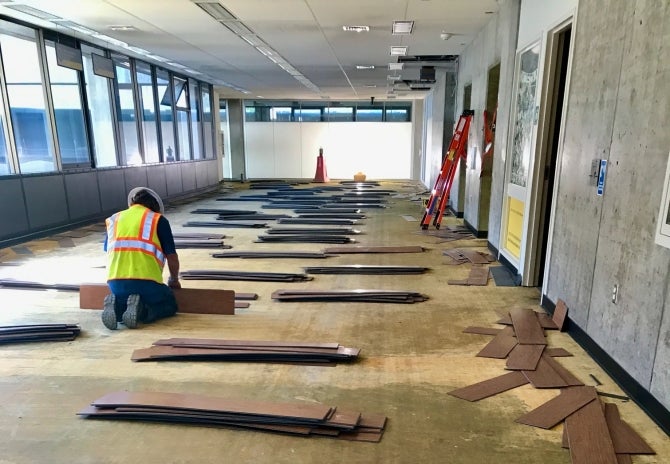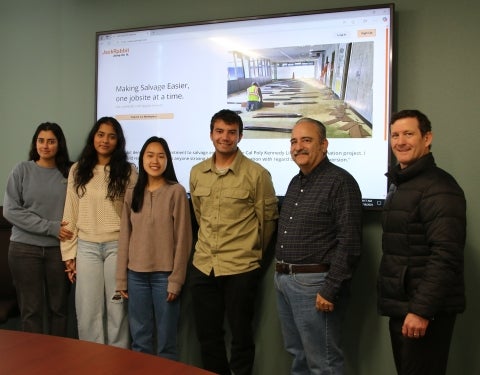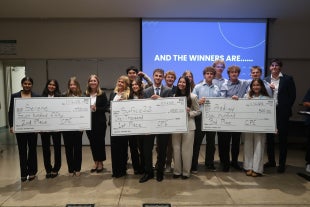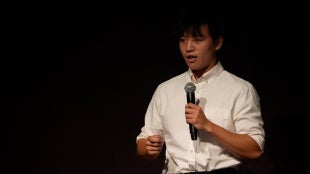Cal Poly Students and Startup Help Divert 10 Tons of Library Flooring from Landfill

Contact: Emily Slater
805-756-6593, 805-266-0208; emslater@calpoly.edu
Tech-powered reuse platform gives construction waste a second life across the Central Coast
SAN LUIS OBISPO — When Cal Poly alumnus Jason Wheeler returned to Kennedy Library, it wasn’t to relive his student days — it was to reimagine its transformation as a catalyst for environmental change.
A business graduate from the class of 2000, Wheeler quickly recognized the potential of the building’s discarded flooring, destined for the landfill but full of new possibilities.
The upgrade of Robert E. Kennedy Library — underway since summer 2023 and slated to be complete in September — features an energy-efficient, sustainable design and will offer improved study spaces and updated programming for students.
Inspired, Wheeler founded JackRabbit Salvage Marketplace, a startup designed to connect salvaged construction materials with people ready to give them a second life.
“I saw materials going to waste as costs soared,” he said. “We needed a system to repurpose valuable resources, not discard them.”

JackRabbit’s first transaction redirected 10 tons of reclaimed flooring from the library to a local general contractor, highlighting how technology can turn waste into opportunity. The effort was made possible through collaboration with Cal Poly’s Facilities Management and Development and Kennedy Library renovation contractor Hensel Phelps.
That project also helped launch Cal Poly’s new computer science capstone sequence. Over fall and winter quarters, seven students partnered with Wheeler, under the guidance of faculty lecturer BJ Klingenberg, to upgrade the site in real time — revamping database design and administrative dashboards and enhancing interactive maps and user-login features to make it more user-friendly and visually engaging.
“These students didn’t just hand off code; they left a foundation for the next group to build on,” Wheeler said. “That kind of continuity mirrors what they’ll experience in the real world.”
Klingenberg, who supported the project through his role with Cal Poly’s Center for Innovation and Entrepreneurship’s Small Business Development Center, called the platform a practical tool with wide appeal.
“With platforms like this, reuse becomes easy and intuitive,” Klingenberg said. “Once it gains momentum, everyone from contractors to local artists can find what they need and keep valuable materials in circulation.”
For students, the project offered both technical development and personal insight.
“The materials from the library could be reused elsewhere around town,” said computer science student Michelle Chi. “It’s a community-based approach to conservation.”
JackRabbit’s next phase includes a new “storefront” feature designed to help organizations like Habitat for Humanity showcase materials for reuse. The platform’s name reflects its quick-action philosophy: a jump-on-it mindset that turns demolition waste into shared resources with lasting value.
To learn more or see where salvaged materials are finding new life, visit jackrabt.com.
Top photo: Flooring is carefully pulled from Kennedy Library during its transformation — the first step in giving 10 tons of material a second life through reuse.


